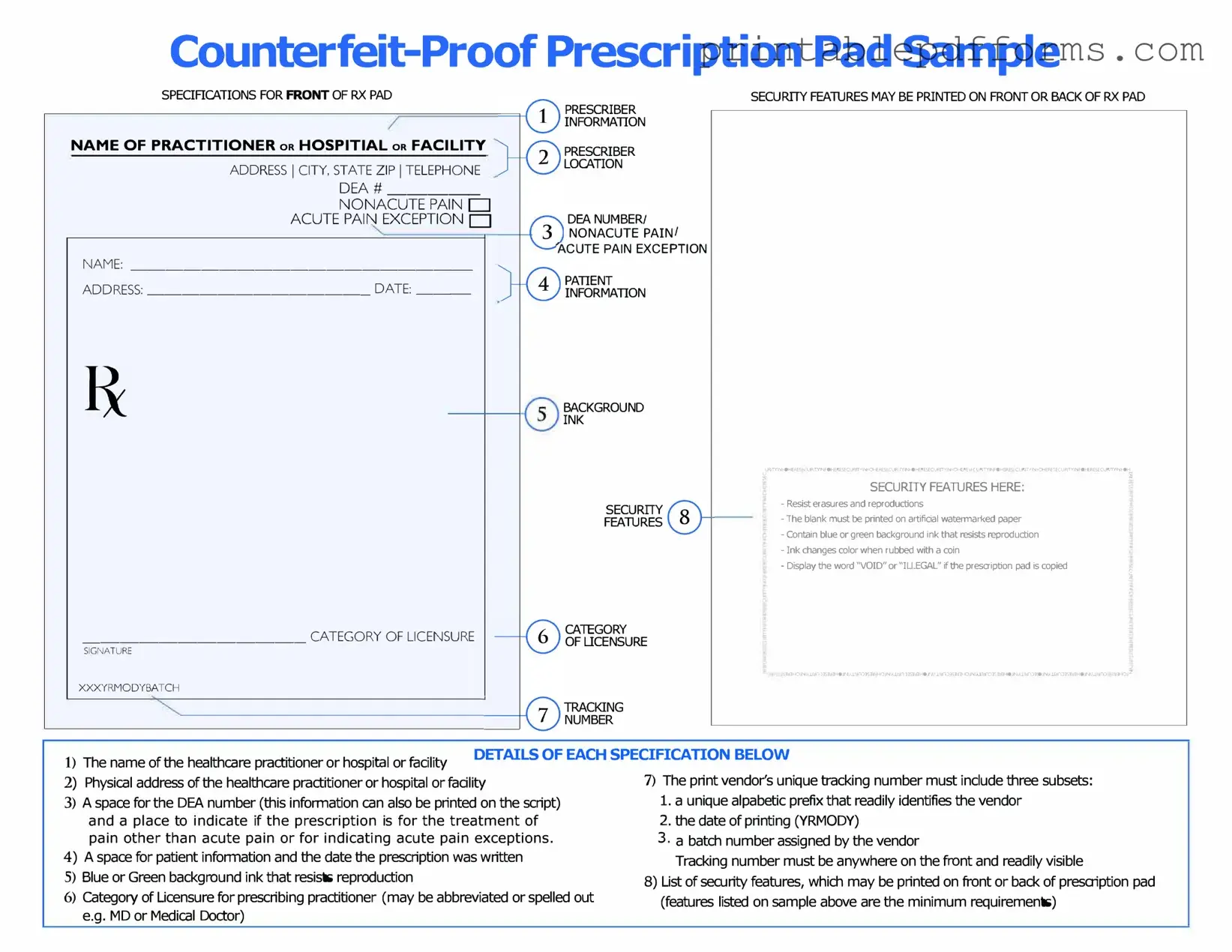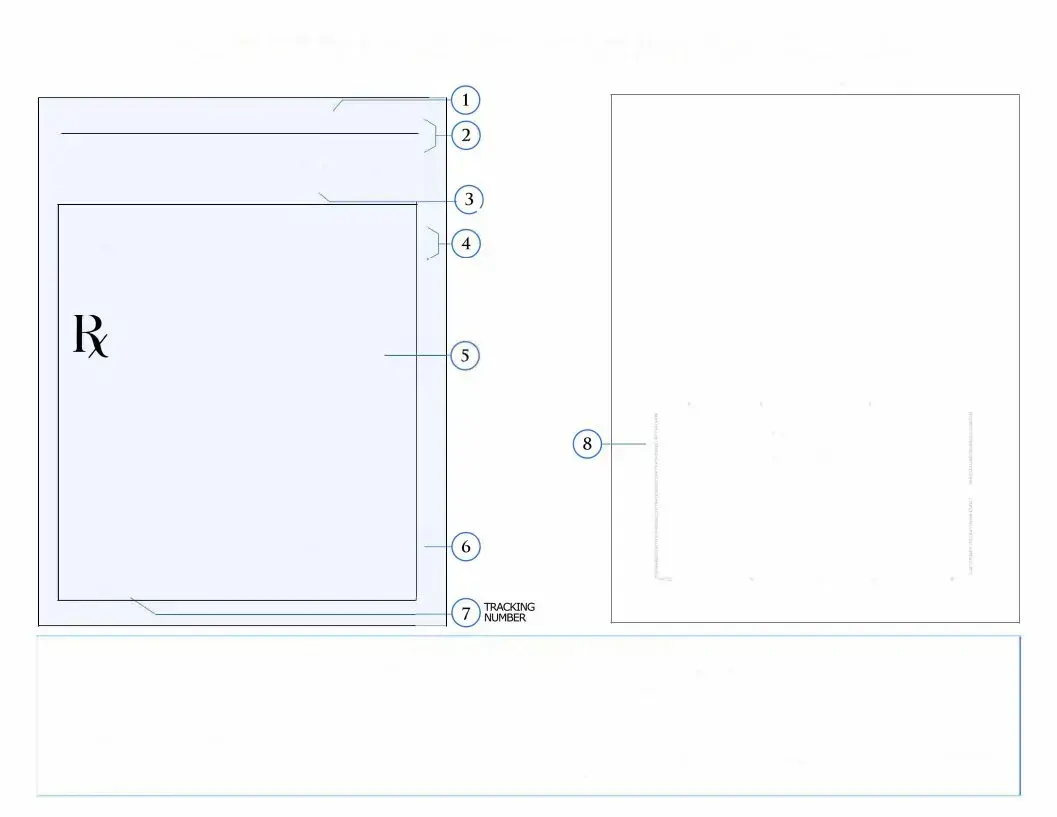The Prescription Pad form is a standardized document used by healthcare providers to prescribe medications to patients. It ensures that prescriptions are clear, accurate, and compliant with legal requirements. This form helps prevent medication errors and provides essential information to both the pharmacist and the patient.
The Prescription Pad form can be used by licensed healthcare professionals, including physicians, nurse practitioners, and physician assistants. These individuals must have the authority to prescribe medications according to state and federal laws. It is crucial that the prescriber is familiar with the specific regulations governing their practice.
The Prescription Pad form typically requires the following information:
-
Patient's full name and date of birth
-
Prescriber's name, contact information, and signature
-
Medication name, dosage, and instructions for use
-
Quantity to be dispensed
-
Refills, if applicable
Additional details may be necessary depending on the medication prescribed and state regulations.
When filling out the Prescription Pad form, it is essential to use clear and legible handwriting or to type the information. All fields should be completed accurately to avoid any confusion. The prescriber must sign the form to validate the prescription. It is advisable to review the completed form for any errors before handing it to the patient or sending it to the pharmacy.
Yes, there are several legal considerations to keep in mind. Prescribers must adhere to state and federal laws regarding the prescribing of medications. This includes ensuring that prescriptions are written for legitimate medical purposes and that the prescriber has established a proper patient-provider relationship. Additionally, it is important to be aware of regulations surrounding controlled substances and to follow the appropriate guidelines for prescribing these medications.
If a patient loses their Prescription Pad form, they should contact their healthcare provider as soon as possible. The provider may need to issue a new prescription to ensure the patient can obtain their medication. It is important for patients to communicate any lost prescriptions to their pharmacist as well, especially if the prescription is for a controlled substance.
Yes, the Prescription Pad form can be adapted for electronic prescriptions. Many healthcare providers now utilize electronic health record systems that allow for the secure transmission of prescriptions directly to pharmacies. This method enhances efficiency, reduces the risk of errors, and improves patient safety. However, providers must ensure compliance with relevant regulations when using electronic prescriptions.

